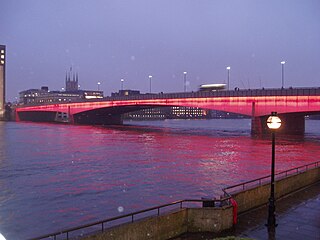 W
WAdministrative counties were a level of subnational division of England used for the purposes of local government from 1889 to 1974. They were created by the Local Government Act 1888 as the areas for which county councils were elected. Some large counties were divided into several administrative counties, each with its own county council. The administrative counties were abolished by the Local Government Act 1972 and were replaced by the metropolitan and non-metropolitan counties of England.
 W
WBothies are remote, rural cottages that have outlived their original purposes but now are kept unlocked for people to take shelter or stay overnight without charge. They are located mostly in Scotland, with a small number in England and Wales, and have extremely basic facilities - with no electricity, gas, or piped water. The Mountain Bothies Association, established in 1965, is a charity that maintains bothies.
 W
WThere are 42 Church of England dioceses, each being an administrative territorial unit governed by a bishop. These cover England, the Isle of Man, the Channel Islands and a small part of Wales. The Diocese in Europe is also a part of the Church of England, and covers the whole of continental Europe, Morocco and the post-Soviet states. The structure of dioceses within the Church of England was initially inherited from the Catholic Church as part of the Protestant Reformation. During the Reformation a number of new dioceses were founded, but no more were then created until the middle of the 19th century, when dioceses were founded mainly in response to the growing population, especially in the northern industrial cities. The most recent diocese to be established was the Diocese of Leeds, which came into being on 20 April 2014. Prior to that, no new dioceses had been founded since 1927. Leeds was created by combining three previous dioceses: the Diocese of Bradford, the Diocese of Ripon and Leeds, and the Diocese of Wakefield.
 W
WThis is a list of civil parishes in England split by ceremonial county. The civil parish is the lowest level of local government in England.
 W
WThe River Thames is the second-longest river in the United Kingdom. It is crossed by over 200 bridges, 27 tunnels, six public ferries, one cable car link, and one ford along its 215-mile (346 km) course.
 W
WThis is a list of the 314 districts of England ordered by population, according to estimated figures for 2019 from the Office for National Statistics.
 W
WMetropolitan and non-metropolitan counties are one of the four levels of subdivisions of England used for the purposes of local government outside Greater London and the Isles of Scilly. As originally constituted, the metropolitan and non-metropolitan counties each consisted of multiple districts, had a county council and were also the counties for the purposes of Lieutenancies. Later changes in legislation during the 1980s and 1990s have allowed counties without county councils and 'unitary authority' counties of a single district. Counties for the purposes of Lieutenancies are now defined separately, based on the metropolitan and non-metropolitan counties.
 W
WHere is a list of places, divided by ceremonial counties of England.
 W
WUnitary authorities of England are local authorities that are responsible for the provision of all local government services within a district. They are constituted under the Local Government Act 1992, which amended the Local Government Act 1972 to allow the existence of counties that do not have multiple districts. They typically allow large towns to have separate local authorities from the less urbanised parts of their counties and provide a single authority for small counties where division into districts would be impractical. Unitary authorities do not cover all of England. Most were established during the 1990s, though further tranches were created in 2009 and 2019–20. Unitary authorities have the powers and functions that are elsewhere separately administered by councils of non-metropolitan counties and the non-metropolitan districts within them.